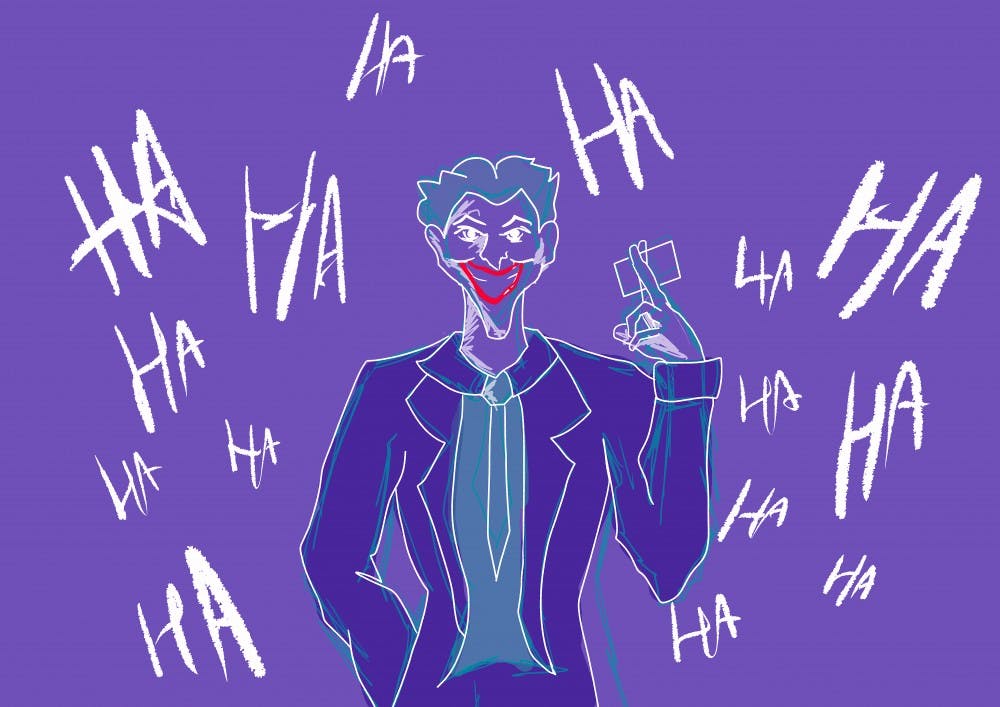Of all villains in comic book history, the most famous is certainly The Joker. His green hair, red lips, purple suit, and too–wide grin are lodged into the collective cultural knowledge of not just comic book villains, but villains in general. He is not only the most recognizable villain, but perhaps the most interesting to follow when it comes to his film adaptations, with the tragic story of Heath Ledger’s run followed by the disappointing revival by Jared Leto. After the cancellation of Leto’s Joker film following the painfully embarrassing Suicide Squad, the fate of DC’s most iconic villain remained up in the air—until now.
Joaquin Phoenix's Joker came to be with the trailer drop on April 3. Phoenix himself is a well–established actor, most famous for playing Johnny Cash in Walk the Line and Theodore in Her. The announcement of his role as Joker comes after months of debate as to who would take up the mantle, even prior to the cancellation of Leto’s film. What is clear about Phoenix’s Joker, however, is that he was made entirely different.
The trailer opens first to a shot of a therapist, then to Phoenix himself. He is unmasked, aged, with wrinkles drawing lines around his mouth, which is downturned in a frown. His eyes raise slowly, and there is a glint in them—just an inkling of insanity. Here is the first hint that this Joker is different: He is halfway to becoming crazy before he even gets there. He is given a name, Arthur Fleck, and it is clear that he is not quite the Joker—not yet.
Most startling, perhaps, is the dichotomy between Phoenix acting as a normal citizen of Gotham followed by clips of him slowly deteriorating. He bathes his mother in water in the bathtub—audiences may know her as one of the reasons for his turn to villainy—then is seen bent over, writing jokes in his childish handwriting. Phoenix’s body contorts over the desk in a way that feels unnatural, alarming, inhuman. He scrawls a smiley face into the large final “O” of what is supposedly a joke: “The worst part about having a mental illness is people expect you to behave as if you don’t.”
For those who have seen the story of the Joker multiple times, it becomes obvious here—through the first shot of the therapist and the blatant statement about a mental illness—that this is not the same Joker backstory we've seen before. In perhaps the most famous comic about the Joker, The Killing Joke, the main character—never named—falls into a vat of chemicals. He emerges with the green hair, pale skin, and red lips of the nation’s most famous super villain.
This Joker, however, has no moment of dramatic, chemically induced transformation. In fact, we see him in his famous outfit and makeup in the next scene, but it's only a costume. The Joker’s day job is playing a clown on the streets of Gotham dressed in a frizzy green wig, emphasized lip makeup, and oversized shoes. It is here that a group of children steal his sign and beat him with it. It is also here that we realize that it is not a vat of chemicals that is going to push Arthur Fleck into corruption—it's the world around him.

Unlike the trailers for Marvel films, which often include clips that aren’t even in the films themselves—focusing on the explosions and action more than the plot itself—every moment of Joker's trailer is spent revealing something new about this version of the titular character.
Perhaps it sounds rather surface–level to insist that this Joker is corrupted by society. However, much of the trailer is spent setting this up: We watch as he is torn down by a group of children on the street, then by three men on an empty subway. We hear how he laughs unnervingly in a crowd by himself, and then watch as he applies eye makeup in the mirror, allowing a tear to fall down his face. The Joker’s corruption is a slow one that Joker will let us examine piece by piece, scene by scene, moment by moment. Instead of an abnormal transformation, Arthur Fleck dyes his hair green as he moves to unheard music, watching himself with intense, unflinching eyes. Looking into a mirror, he pulls his lips into his famous smile, and then does the same to a child from behind a gate. He leads a revolution of men in masks, runs through the halls of Arkham Asylum, and sets himself up to be one of the greatest super–villains of all time.
A knee–jerk reaction may be to compare Phoenix to Ledger in Christopher Nolan’s Batman trilogy, but here we're seeing a very different form of the Joker: One that has not already fallen from morality by the time we are introduced to him and one that is not far past saving. Even in the brief moments of the trailer, he is able to be seen as pitiable, terrified, and three–dimensional. The layers of the Joker, of course, are yet to be unraveled, but it is clear that they are in capable hands.







